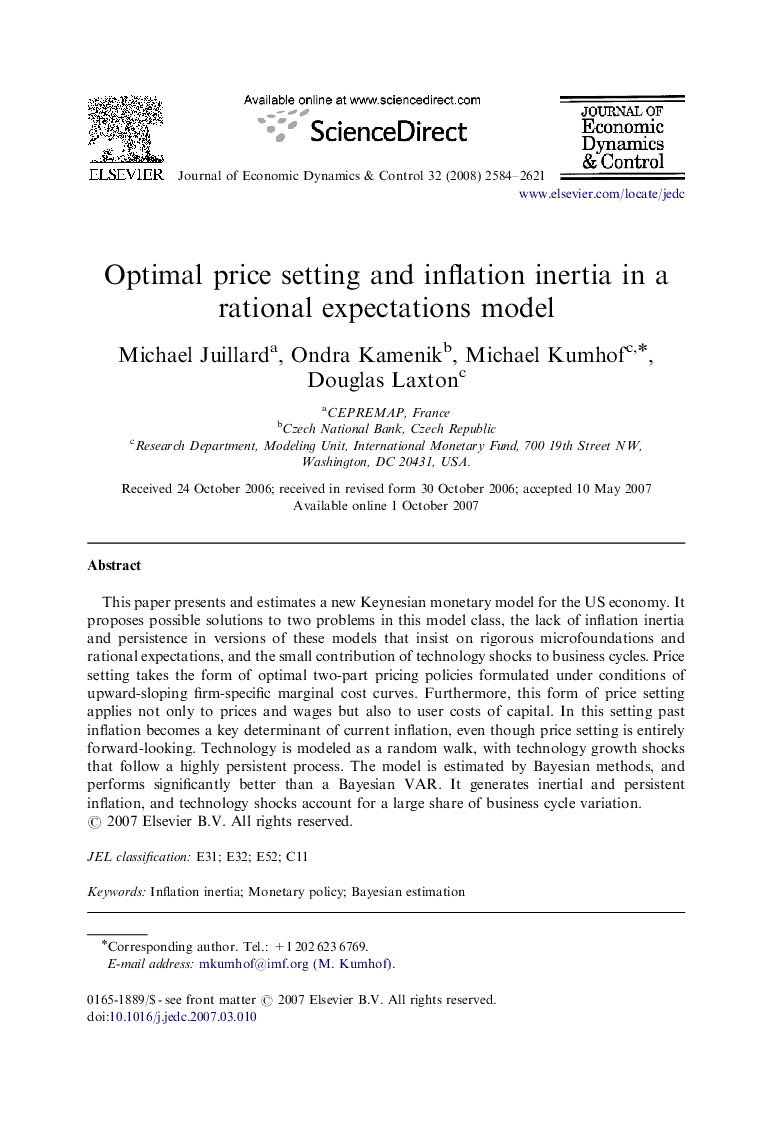| Article ID | Journal | Published Year | Pages | File Type |
|---|---|---|---|---|
| 5099250 | Journal of Economic Dynamics and Control | 2008 | 38 Pages |
Abstract
This paper presents and estimates a new Keynesian monetary model for the US economy. It proposes possible solutions to two problems in this model class, the lack of inflation inertia and persistence in versions of these models that insist on rigorous microfoundations and rational expectations, and the small contribution of technology shocks to business cycles. Price setting takes the form of optimal two-part pricing policies formulated under conditions of upward-sloping firm-specific marginal cost curves. Furthermore, this form of price setting applies not only to prices and wages but also to user costs of capital. In this setting past inflation becomes a key determinant of current inflation, even though price setting is entirely forward-looking. Technology is modeled as a random walk, with technology growth shocks that follow a highly persistent process. The model is estimated by Bayesian methods, and performs significantly better than a Bayesian VAR. It generates inertial and persistent inflation, and technology shocks account for a large share of business cycle variation.
Related Topics
Physical Sciences and Engineering
Mathematics
Control and Optimization
Authors
Michael Juillard, Ondra Kamenik, Michael Kumhof, Douglas Laxton,
